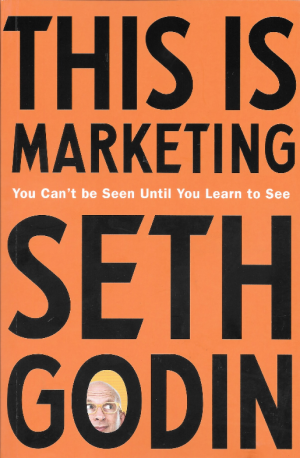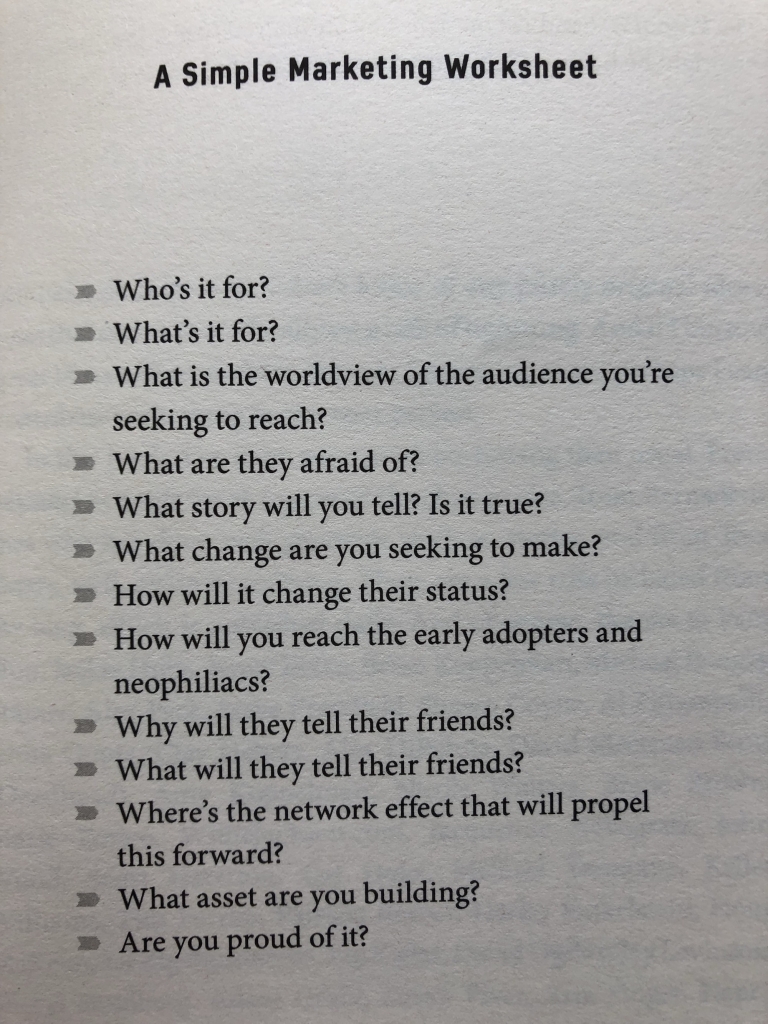The one sentence summary
You can’t be seen until you learn to see, so to bring the work you care about to the people eager to see it, you need to be fully engaged.
WHAT THE BOOK SAYS

- This is a synopsis of everything the author knows about marketing, essentially covering all the material in his seminar on the topic.
- Marketing in 5 steps:
1. Invent a thing worth making, with a story worth telling, and a contribution worth talking about.
2. Design and build it in a way that a few people will benefit from and care about.
3. Tell a story that matches the built-in narrative of that group.
4. Spread the word.
5. Show up regularly and consistently to lead and build confidence in the change you seek, so as to earn permission to follow up and earn enrolment.
- People don’t want what you make – they want the way it will make them feel. “People like us do things like this.”
- Set up your three-sentence marketing promise:
1. My product is for people who believe ________
2. I will focus on people who want ___________
3. I promise that engaging with what I make will help you get ________
- For people who want what you want (_____) and believe what you believe (______), your choice of (______) is absolutely correct.
WHAT’S GOOD ABOUT IT
- Beware of two classic marketing mistakes: 1. Assuming that people you are seeking to serve are well-informed, rational, independent, and long-term choice makers. 2. Assuming that everyone is like you, knows what you know, and wants what you want. “I’m not rational and neither are you.”
- Three common confusions:
1. People confuse wants and needs.
2. People are intimately aware of their wants (which they think of as needs when actually they are not), and they are absolutely terrible at inventing new ways to address those wants.
3. Mistakenly believing that everyone wants the same thing – they don’t. Early adopters want new things; laggards want things never to change.
- Who are you seeking to change? is a powerful marketing question. You have no chance of changing everyone.The essential question: “Who’s it for?” has a subtle but magic quality.Marketers should return to it often.
- Do not succumb to the tyranny of perfect. Embrace the magic of good enough, and the possibility of better.
- It’s worth working out why the people who don’t choose you are right in their decision: why are they right? Answer that and you may be able to improve your offer.
- Price is both a marketing story and a tool. Being cheap can make you look scared.
WHAT YOU HAVE TO WATCH
- Seasoned marketers and readers of other works by the author will know most of this, but for everyone else it is a comprehensive run-through of everything you need to cover in marketing.

